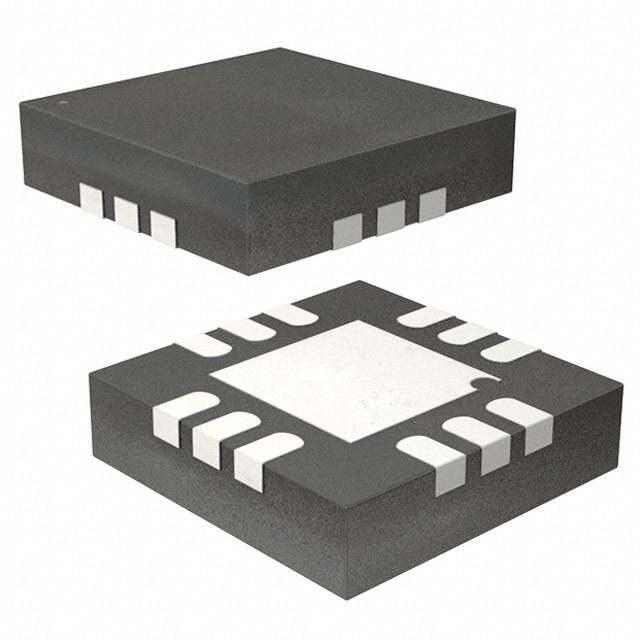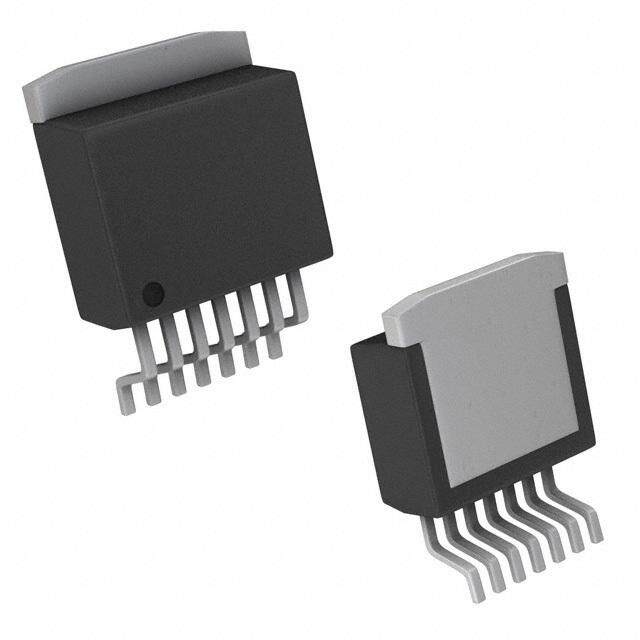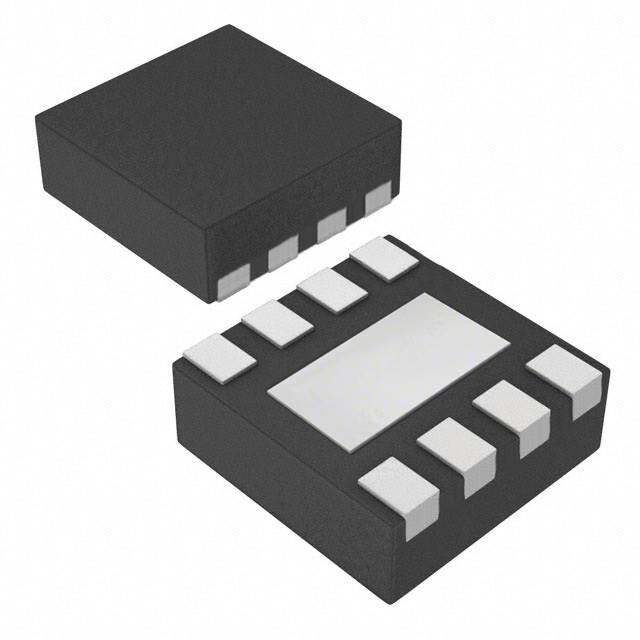ICGOO在线商城 > 集成电路(IC) > PMIC - 稳压器 - DC DC 开关稳压器 > LT1616ES6#TRPBF
- 型号: LT1616ES6#TRPBF
- 制造商: LINEAR TECHNOLOGY
- 库位|库存: xxxx|xxxx
- 要求:
| 数量阶梯 | 香港交货 | 国内含税 |
| +xxxx | $xxxx | ¥xxxx |
查看当月历史价格
查看今年历史价格
LT1616ES6#TRPBF产品简介:
ICGOO电子元器件商城为您提供LT1616ES6#TRPBF由LINEAR TECHNOLOGY设计生产,在icgoo商城现货销售,并且可以通过原厂、代理商等渠道进行代购。 LT1616ES6#TRPBF价格参考。LINEAR TECHNOLOGYLT1616ES6#TRPBF封装/规格:PMIC - 稳压器 - DC DC 开关稳压器, 可调式 降压 开关稳压器 IC 正 1.25V 1 输出 600mA SOT-23-6。您可以下载LT1616ES6#TRPBF参考资料、Datasheet数据手册功能说明书,资料中有LT1616ES6#TRPBF 详细功能的应用电路图电压和使用方法及教程。
LT1616ES6#TRPBF是Linear Technology(现已被Analog Devices收购)生产的一款DC-DC开关稳压器,适用于多种应用场景。该器件具有高效、紧凑和易于使用的特性,广泛应用于需要高效电源管理的场合。 应用场景: 1. 便携式电子产品: LT1616ES6#TRPBF非常适合用于便携式设备,如智能手机、平板电脑、可穿戴设备等。这些设备通常依赖电池供电,对电源效率和体积有严格要求。LT1616ES6#TRPBF能够在小封装内提供高效的电源转换,延长电池寿命,同时减少热量产生。 2. 工业自动化: 在工业控制系统中,稳定的电源供应至关重要。LT1616ES6#TRPBF可以为传感器、执行器、PLC(可编程逻辑控制器)等设备提供稳定的电源,确保系统可靠运行。其宽输入电压范围和高效率特性使其能够适应不同的工业环境。 3. 通信设备: 通信基站、路由器、交换机等设备需要高效且可靠的电源管理系统。LT1616ES6#TRPBF可以为这些设备中的微处理器、FPGA(现场可编程门阵列)和其他关键组件提供稳定的电源,确保数据传输的稳定性和可靠性。 4. 汽车电子: 汽车电子系统中,如车载信息娱乐系统、导航系统、ADAS(高级驾驶辅助系统)等,对电源管理的要求非常高。LT1616ES6#TRPBF能够在汽车启动时应对电压波动,并提供稳定的输出电压,确保系统的正常运行。 5. 医疗设备: 医疗设备如便携式医疗仪器、监护仪等需要高精度和低噪声的电源。LT1616ES6#TRPBF的低噪声特性和高效率使其成为这些应用的理想选择,确保设备的准确性和稳定性。 总之,LT1616ES6#TRPBF凭借其高效、紧凑和可靠的性能,在便携式电子产品、工业自动化、通信设备、汽车电子和医疗设备等多个领域都有广泛的应用。
| 参数 | 数值 |
| 产品目录 | 集成电路 (IC) |
| 描述 | IC REG BUCK ADJ 0.6A SOT23-6 |
| 产品分类 | |
| 品牌 | Linear Technology |
| 数据手册 | http://www.linear.com/docs/1473 |
| 产品图片 |
|
| 产品型号 | LT1616ES6#TRPBF |
| PWM类型 | 电流模式 |
| rohs | 无铅 / 符合限制有害物质指令(RoHS)规范要求 |
| 产品系列 | - |
| 供应商器件封装 | TSOT-23-6 |
| 其它名称 | LT1616ES6#TRPBFCT |
| 包装 | 剪切带 (CT) |
| 同步整流器 | 无 |
| 安装类型 | 表面贴装 |
| 封装/外壳 | SOT-23-6 细型,TSOT-23-6 |
| 工作温度 | -40°C ~ 85°C |
| 标准包装 | 1 |
| 电压-输入 | 3.6 V ~ 25 V |
| 电压-输出 | 1.25 V ~ 20 V |
| 电流-输出 | 600mA |
| 类型 | 降压(降压) |
| 输出数 | 1 |
| 输出类型 | 可调式 |
| 频率-开关 | 1.4MHz |
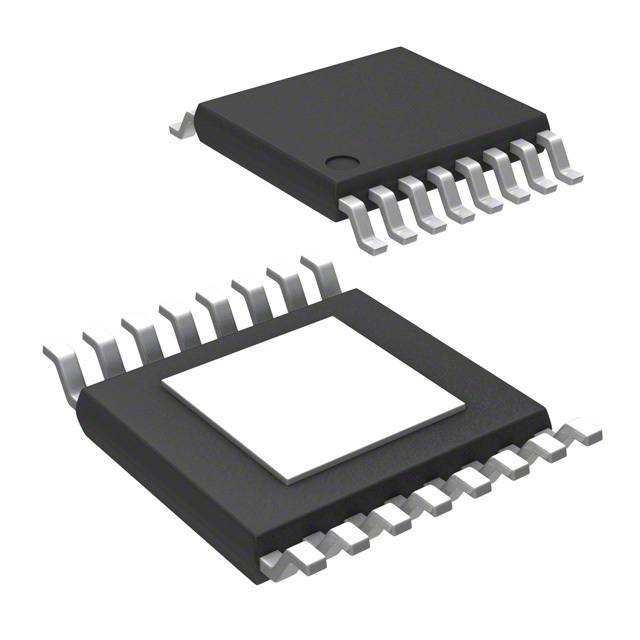

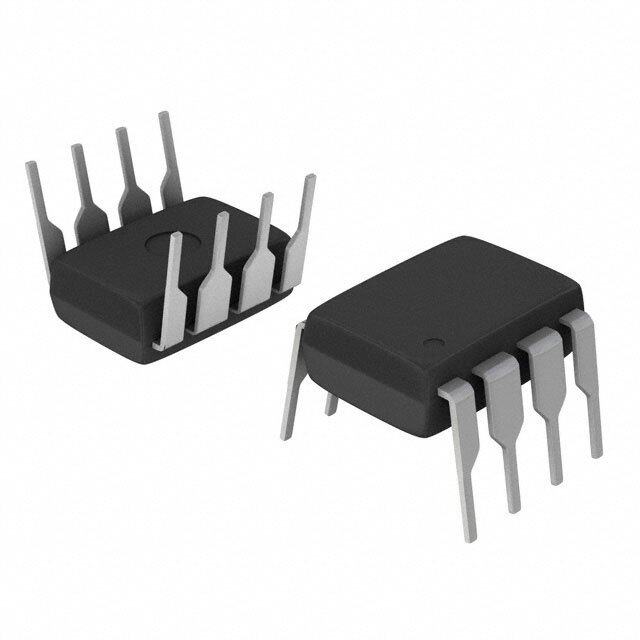
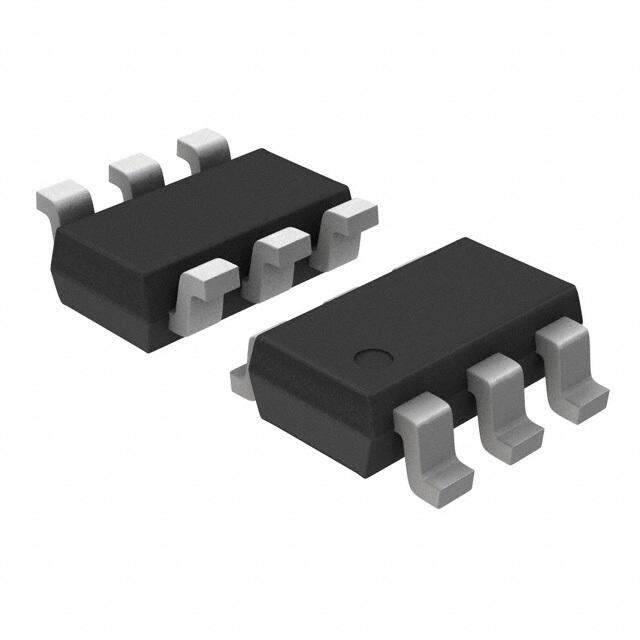
PDF Datasheet 数据手册内容提取
LT1616 600mA, 1.4MHz Step-Down Switching Regulator in SOT-23 FEATURES DESCRIPTIOU n Wide Input Range: 3.6V to 25V The LT®1616 is a current mode PWM step-down DC/DC n 5V at 400mA from 7V to 25V Input converter with internal 0.6A power switch, packaged in a n 3.3V at 400mA from 4.7V to 25V Input tiny 6-lead SOT-23. The wide input range of 3.6V to 25V n Fixed Frequency 1.4MHz Operation n Uses Tiny Capacitors and Inductors power sources, from 4-cell batteries and 5V logic rails to n Internally Compensated unregulated wall transformers and lead-acid batteries. Its n Low Shutdown Current: <1m A high operating frequency allows the use of tiny, low cost n Low V Switch: 220mV at 300mA inductors and ceramic capacitors. With its internal com- CESAT n Tiny 6-Lead SOT-23 Package pensation eliminating additional components, a complete 400mA step-down regulator fits onto 0.15 square inches APPLICATIOU S of PC board area. The constant frequency current mode PWM architecture n Wall Transformer Regulation and stable operation with ceramic capacitors results in n Local Logic Supply Conversion: low, predictable output ripple. Current limiting provides 12V to 5V protection against shorted outputs. The low current (<1m A) 12V or 5V to 3.3V, 2.5V or 1.8V shutdown provides complete output disconnect, enabling n Distributed Supply Regulation easy power management in battery-powered systems. n Digital Cameras , LTC and LT are registered trademarks of Linear Technology Corporation. n Battery-Powered Equipment TYPICAL APPLICATIOU 3.3V Step-Down Converter Efficiency D2 100 4.5V TO 2V5IVN 5 VIN BOOST 1 LT1616 C0.301µF 10Lµ1H 90 VIN = 5V VIN = 12V OFF ON 4 SHDN SW 6 V3.O3UVT 80 GND2 FB3 16R.15k D1 430000mmAA:: VVIINN == 44..57VV TTOO 2255VV NCY (%) 70 VIN = 20V E CI 60 C1µ1F R102k C102µF EFFI 50 C1: TAIYO-YUDEN TMK316BJ105 C2: TAIYO-YUDEN JMK316BJ106ML 1616 TA01 40 D1: ON SEMICONDUCTOR MBR0530 D2: 1N4148 30 L1: SUMIDA CR43-100 0 100 200 300 400 500 LOAD CURRENT (mA) 1616 G02 1
LT1616 ABSOLUTE W AXIW UW RATIU GS PACKAGE/ORDER IU FORW ATIOU (Note 1) Input Voltage (V ) ................................................. 25V ORDER PART IN BOOST Pin Voltage................................................. 35V NUMBER BOOST Pin Above SW Pin ...................................... 25V TOP VIEW LT1616ES6 SHDN Pin ............................................................... 25V BOOST 1 6 SW FB Voltage ................................................................ 6V GND 2 5 VIN Current Into FB Pin...............................................– 1mA FB 3 4 SHDN Operating Temperature Range (Note 2).. –40(cid:176) C to 85(cid:176) C S6 PACKAGE S6 PART MARKING Maximum Junction Temperature..........................125(cid:176) C 6-LEAD PLASTIC SOT-23 LTNB Storage Temperature Range................. –65(cid:176) C to 150(cid:176) C TJMAX = 125(cid:176)C, q JA = 250(cid:176)C/W Lead Temperature (Soldering, 10 sec)..................300(cid:176) C Consult factory for parts specified with wider operating temperature ranges. ELECTRICAL CHARACTERISTICS The l denotes specifications which apply over the full operating temperature range, otherwise specifications are at T = 25(cid:176) C. A V = 10V, V = 15V, unless otherwise noted. (Note 2) IN BOOST PARAMETER CONDITIONS MIN TYP MAX UNITS Undervoltage Lockout 3.35 3.6 V Feedback Voltage l 1.225 1.25 1.275 V FB Pin Bias Current V = Measured V + 10mV l 150 600 nA FB REF Quiescent Current Not Switching 1.9 2.5 mA Quiescent Current in Shutdown V = 0V 0.01 2 m A SHDN Reference Line Regulation V = 5V to 25V 0.005 %/V IN Switching Frequency V = 1.1V l 1 1.4 1.8 MHz FB Frequency Shift Threshold on FB Pin f = 700kHz 0.44 V SW Maximum Duty Cycle l 80 87 % Switch Current Limit (Note 3) 630 850 mA Switch V I = 300mA 220 350 mV CESAT SW Switch Leakage Current 10 m A Minimum Boost Voltage Above Switch I = 300mA 1.6 2.5 V SW BOOST Pin Current I = 300mA 7 12 mA SW SHDN Input Voltage High 1.8 V SHDN Input Voltage Low 0.4 V SHDN Bias Current V = 3V 8 15 m A SHDN V = 0V 0.01 0.1 m A SHDN Note 1: Absolute Maximum Ratings are those values beyond which the life Note 3: Current limit guaranteed by design and/or correlation to static test. of the device may be impaired. Slope compensation reduces current limit at higher duty cycle. Note 2: The LT1616E is guaranteed to meet performance specifications from 0(cid:176) C to 70(cid:176) C. Specifications over the –40(cid:176) C to 85(cid:176) C operating temperature range are assured by design, characterization and correlation with statistical process controls. 2
LT1616 TYPICAL PERFORW AU CE CHARACTERISTICS Efficiency, V = 5V Efficiency, V = 3.3V Switch Voltage Drop OUT OUT 100 100 500 90 VIN = 8V 90 VIN = 5V VIN = 12V 400 80 VIN = 12V 80 mV) %) %) E ( EFFICIENCY ( 765000 VIN = 24V EFFICIENCY ( 765000 VIN = 20V WITCH VOLTAG 230000 S 100 40 40 30 30 0 0 100 200 300 400 500 0 100 200 300 400 500 0 200 400 600 LOAD CURRENT (mA) LOAD CURRENT (mA) SWITCH CURRENT (mA) 1616 G01 1616 G02 1616 G03 Maximum Load Current Maximum Load Current at V = 5V at V = 3.3V BOOST Pin Current OUT OUT 500 500 16 L = 15µH L = 10µH 14 mA) 400 L = 10µH mA) 400 L = 4.7µH T (mA) 12 NT ( L = 6.8µH NT ( REN 10 RE 300 RE 300 OUTPUT LIMITED UR 8 AD CUR OBUYT DPIUSTS ILPIAMTIITOEND AD CUR BY DISSIPATION T PIN C 6 O O S L 200 L 200 OO 4 B 2 100 100 0 0 5 10 15 20 25 0 5 10 15 20 25 0 200 400 600 INPUT VOLTAGE (V) INPUT VOLTAGE (V) SWITCH CURRENT (mA) 1616 G04 1616 G05 1616 G06 Switch Current Limit Feedback Pin Voltage Undervoltage Lockout 1000 1.27 3.7 3.6 SWITCH CURRENT LIMIT (mA) 284600000000 TYPIMCIANLIMUM FEEDBACK PIN VOLTAGE (V)1111....22223456 UNDERVOLTAGE LOCKOUT (V) 3333....2345 0 1.22 3.1 0 20 40 60 80 100 –50 –25 0 25 50 75 100 –50 –25 0 25 50 75 100 DUTY CYCLE (%) TEMPERATURE (°C) TEMPERATURE (°C) 1616 G07 1616 G08 1616 G11 3
LT1616 TYPICAL PERFORW AU CE CHARACTERISTICS Oscillator Frequency SHDN Pin Current 2.00 120 1.75 100 MHz)1.50 A) NCY (1.25 µNT ( 80 UE RE EQ1.00 UR 60 R C WITCHING F00..5705 SHDN PIN 40 S 20 0.25 0 0 –50 –25 0 25 50 75 100 0 5 10 15 20 25 TEMPERATURE (°C) SHDN PIN VOLTAGE 1616 G09 1616 G10 PIU FUU CTIOU S BOOST (Pin 1): The BOOST pin is used to provide a drive SHDN (Pin 4): The SHDN pin is used to put the LT1616 in voltage, higher than the input voltage, to the internal shutdown mode. Tie to ground to shut down the LT1616. bipolar NPN power switch. Tie to 2V or more for normal operation. If the shutdown feature is not used, tie this pin to the V pin. GND (Pin 2): Tie the GND pin to a local ground plane below IN the LT1616 and the circuit components. Return the feed- V (Pin 5): The V pin supplies current to the LT1616’s IN IN back divider to this pin. internal regulator and to the internal power switch. This pin must be locally bypassed. FB (Pin 3): The LT1616 regulates its feedback pin to 1.25V. Connect the feedback resistor divider tap to this pin. Set SW (Pin 6): The SW pin is the output of the internal power the output voltage according to V = 1.25V (1 + R1/R2). switch. Connect this pin to the inductor, catch diode and OUT A good value for R2 is 10k. boost capacitor. 4
LT1616 BLOCK DIAGRAW VIN 5 INT REG 1 BOOST SHDN 4 AND UVLO S SLOPE COMP R Q S Q DRIVER Q1 OSC 6 SW FFROELQDUBAENCKCY VC gm 1.25V 2 3 1616BD GND FB OPERATIOU (Refer to Block Diagram) The LT1616 is a constant frequency, current mode Buck SHDN pin is used to place the LT1616 in shutdown, regulator. The 1.4MHz oscillator enables an RS flip-flop, disconnecting the output and reducing the input current turning on the internal 600mA power switch Q1. An ampli- to less than 1m A. fier and comparator monitor the current flowing between The switch driver operates from either the input or from the V and SW pins, turning the switch off when this current IN the BOOST pin. An external capacitor and diode are used reaches a level determined by the voltage at V . An error C to generate a voltage at the BOOST pin that is higher than amplifier measures the output voltage through an external the input supply. This allows the driver to fully saturate the resistor divider tied to the FB pin. This amplifier servos the internal bipolar NPN power switch for efficient operation. switch current to regulate the FB pin voltage to 1.25V. An active clamp on the V node provides current limit. The oscillator reduces the LT1616’s operating frequency C when the voltage at the FB pin is low. This frequency An internal regulator provides power to the control cir- foldback helps to control the output current during start- cuitry. This regulator includes an undervoltage lockout to up and overload. prevent switching when V is less than ~3.5V. The IN 5
LT1616 APPLICATIOU S IU FORW ATIOU The LT1616 efficiently converts power from an input volt- (second trace) and the inductor (third trace) increases. age source to a lower output voltage using an inductor for When the switch turns off, the switch current immediately energy storage. The LT1616 uses its internal power switch drops to zero and the inductor current flows through the and an external catch diode (D1 of the application circuit catch diode D1, which clamps the switch node 0.4V below on the first page of this data sheet) to produce a pulse- ground. The voltage across the inductor in this state has width modulated square wave. Inductor L1 and output the opposite sense and is equal to the output voltage plus capacitor C2 filter this square wave to produce a DC output the catch diode drop, so the inductor current begins to voltage. An error amplifier regulates the output by com- decrease. The fourth trace shows the output voltage ripple. paring the output (divided by the feedback resistor string At light loads, the inductor current may reach zero on each R1 and R2) to an internal reference. The LT1616 uses pulse. The diode will turn off, and the switch voltage will current mode control; instead of directly modulating the ring, as shown in Figure 2. This is discontinuous mode op- pulse width, the error amplifier controls the peak current eration, and is normal behavior for the switching regula- in the switch and inductor. Current mode control has sev- tor. The LT1616 will also skip pulses when the load is light. eral advantages, including simplified loop compensation and cycle-by-cycle current limiting. Figure 1 shows several waveforms of the application cir- cuit on the front page of this data sheet. The circuit is converting a 12V input to 3.3V at 300mA. The first trace is VSW 5V/DIV the voltage at the SW pin. When the internal switch is on, the SW pin voltage is near the 12V input. This applies a voltage across inductor L1, and the current in the switch IL1 0.2A/DIV 1616 F02 VIN = 12V 500ns/DIV VOUT = 5V IOUT = 18mA VSW 5V/DIV Figure 2. Discontinuous Mode Operation If the output is shorted to ground, the output voltage will ISW collapse and there will be very little voltage to reset the 0.2A/DIV current in the inductor. The LT1616 can sense this condi- tion at its FB pin. In order to control the current, the LT1616 200ns/DIV 1616 F01a reduces its operating frequency, allowing more time for the catch diode to reset the inductor current. The input and output voltages determine the duty cycle of IL1 the switch. The inductor value combined with these volt- 0.2A/DIV ages determines the ripple current in the inductor. Along with the switch current limit, the inductor ripple current VOUT determines the maximum load current that the circuit can 5mV/DIV supply. At minimum, the input and output capacitors are required for stable operation. Specific values are chosen based on allowable ripple and desired transient perfor- 200ns/DIV 1616 F01b mance. The rest of the applications information is mainly concerned with choosing these and the other components Figure 1. Operating Waveforms of the LT1616 Converting 12V to 3.3V at 300mA in an LT1616 application. 6
LT1616 APPLICATIOU S IU FORW ATIOU Inductor Selection and Maximum Output Current If your application calls for output current less than 400mA, you may be able to relax the value of the inductor The duty cycle of the internal switch is: and operate with higher ripple current. This may allow you DC = (VOUT + VD)/(VIN – VSW + VD) to pick a physically smaller inductor or one with a lower DC resistance. Be aware that these equations assume con- where V is the forward voltage drop of the catch diode D tinuous inductor current. If the inductor value is low or the (D1) and V is the voltage drop of the internal switch. SW load current is light, then the inductor current may become Usually one is interested in DC at full load current, so you discontinuous. This occurs when D I = 2I . For details can use V = V = 0.4V. Note that the LT1616 has a L OUT D SW of discontinuous mode operation, see Linear Technology maximum guaranteed duty cycle of 0.8. This will limit the Application Note AN44. Also, high duty cycle operation minimum input voltage for a particular output voltage. may require slightly higher inductor values to avoid sub- When the switch is off, the inductor sees the output harmonic oscillations. See AN19. voltage plus the catch diode drop. This gives the peak-to- The maximum load current as a function of input voltage peak ripple current in the inductor: is plotted in the Typical Performance Characteristics sec- D I = (1 – DC)(V + V )/(L • f) L OUT D tion of this data sheet. Maximum load current for 3.3V and where f is the switching frequency of the LT1616 and L is 5V outputs is shown for several values of L. At the highest the value of the inductor. The average inductor current is input voltages, the load current is limited by power dissi- equal to the output current, so the peak inductor current pation in the LT1616. will be the output current plus one half of the ripple Choose an inductor that is intended for power applica- current: tions. Table 1 lists several manufacturers and inductor I = I + D I /2. series. The saturation current of the inductor should be LPK OUT L above 0.5A. The RMS current rating should be equal to or To maintain output regulation, this peak current must be greater than output current. For indefinite operation into a less than the LT1616’s switch current limit I . I is at LIM LIM short circuit, the RMS current rating should be greater least 630mA at low duty cycles, decreasing to 430mA at than 0.7A. The DC resistance should be less than 0.5W in 80% duty cycle. The maximum output current is a function order maintain circuit efficiency. of the chosen inductor value: I = I – D I /2. Capacitor Selection OUT(MAX) LIM L If the inductor value is chosen so that the ripple current is A Buck regulator draws from its input a square wave of small, then the available output current will be near the current with peak-to-peak amplitude as high as the switch switch current limit. A good approach is to choose the current limit. The input capacitor (C1) must supply the AC inductor so that the peak-to-peak inductor ripple is equal component of this current. An RMS current rating of to one third of the switch current limit. This leads to: 250mA is adequate for LT1616 circuits. The input capaci- tor must bypass the LT1616 internal control circuitry and L = 3(1 – DC)(V + V )/(I •f) OUT D LIM any other circuitry that operates from the input source. A and 1m F ceramic capacitor will satisfy both of these require- ments. If the impedance of the input source is high (due to I = (5/6)I . OUT(MAX) LIM long wires or filter components), additional bulk input These expressions depend on duty cycle and therefore on capacitance may be required. In high duty cycle applica- input voltage. Pick a nominal input voltage to calculate L, tions (5V to 3.3V , for example), increase the input IN OUT then check the maximum available output current at the capacitor to 2.2m F. It may be possible to achieve lower cost minimum and maximum input voltages. by using an electrolytic capacitor (tantalum or aluminum) 7
LT1616 APPLICATIOU S IU FORW ATIOU Table 1. Inductor Vendors Vendor Phone URL Part Series Comments Murata (404) 426-1300 www.murata.com LQH3C Small, Low Cost, 2mm Height Sumida (847) 956-0666 www.sumida.com CR43 CLS62 1:1 Coupled CLQ61 1.5mm Height Coilcraft (847) 639-6400 www.coilcraft.com DO1607C DO1608C DT1608C Coiltronics (407) 241-7876 www.coiltronics.com CTXxx-1 1:1 Coupled Toroid TP1 1.8mm Height Toko www.tokoam.com 3DF D52LC Table 2. Capacitor Vendors Vendor Phone URL Part Series Comments Taiyo-Yuden (408) 573-4150 www.t-yuden.com Ceramic Caps X5R Dielectric AVX (803) 448-9411 www.avxcorp.com Ceramic Caps Tantalum Caps Murata (404) 436-1300 www.murata.com Ceramic Caps in combination with a 0.1m F ceramic capacitor. However, Another constraint on the output capacitor is that it must input voltage ripple will be higher, and you may want to have greater energy storage than the inductor; if the stored include an additional 0.1m F ceramic a short distance away energy in the inductor is transferred to the output, you from the LT1616 circuit in order to filter the high frequency would like the resulting voltage step to be small compared ripple. The input capacitor should be rated for the maxi- to the regulation voltage. For a 5% overshoot, this require- mum input voltage. ment becomes The output capacitor has two essential functions. Along C > 10 • L(I /V )2 OUT LIM OUT with the inductor, it filters the square wave generated by Finally, there must be enough capacitance for good tran- the LT1616 to produce the DC output. In this role it sient performance. The last equation gives a good starting determines the output ripple. The second function is to point. Alternatively, you can start with one of the designs store energy in order to satisfy transient loads and stabi- in this data sheet and experiment to get the desired lize the LT1616’s control loop. performance. Figure 3 illustrates some of the trade-off In most switching regulators the output ripple is deter- between different output capacitors. Figure 4 shows the mined by the equivalent series resistance (ESR) of the test circuit. The lowest trace shows total output current, output capacitor. Because the LT1616’s control loop doesn’t which jumps from 100mA to 250mA. The other traces depend on the output capacitor’s ESR for stable operation, show the output voltage ripple and transient response you are free to use ceramic capacitors to achieve very low with different output capacitors. The capacitor value, size output ripple and small circuit size. You can estimate and type are listed. Note that the time scale at 50m s per output ripple with the following equations: divison is much larger than the switching period, so you can’t see the output ripple at the switching frequency. The V = D I • ESR for electrolytic capacitors (tantalum RIPPLE L output ripple appears as vertical broadening of the trace. and aluminum) The first trace (C = 4.7m F) has peak-to-peak output OUT VRIPPLE = D IL/(2p • f • COUT) for ceramic capacitors ripple of ~6mV, while the third trace shows peak-to-peak ripple of ~15mV. 8
LT1616 APPLICATIOU S IU FORW ATIOU 1V0IVN 5 VIN BOOST 1 LT1616 10µH 4 SHDN SW 6 VOUT 3.3V GND FB 22Ω 2 3 33Ω COUT = 4.7m F CERAMIC, CASE SIZE 0805 COUT 1616 F04 Figure 4. Circuit Used for Transient Load Test Shown in Figure 3 Regardless of which capacitor or combination of capaci- tors you choose, you should do transient load tests to COUT = 10m F CERAMIC, CASE SIZE 1206 evaluate the circuit’s stability. Avoid capacitors or combi- nations that result in a ringing response. Problems may occur if the output capacitance is very low or if a high value inductor is used in combination with a large value, low ESR capacitor. The high performance (low ESR), small size and robust- ness of ceramic capacitors make them the preferred type COUT = 47m F, ESR @ 0.080W (SANYO POSCAP 6TPA47M) C CASE for LT1616 applications. However, all ceramic capacitors are not the same. Many of the higher value capacitors use poor dielectrics with high temperature and voltage coefficients. In particular, Y5V types should be regarded with suspicion. Stick with X7R and X5R types. Don’t be afraid to run them at their rated voltage. Table 2 lists several capacitor manufacturers. COUT = 100m F, ESR @ 0.150W (TANTALUM AVX TPSC107M006R0150) C CASE Catch Diode A 0.5A Schottky diode is recommended for the catch diode VOUT 20mV/DIV D1. The ON Semiconductor MBR0530 is a good choice; it is rated for 0.5A forward current and a maximum reverse voltage of 30V. For circuits with V less than 20V, the IN ILOAD MBR0520L can be used. Other suitable diodes are the 100mA/DIV Zetex ZHCS500TR and ZHCS750TR, and various versions 0 of the 1N5818. COUT = 100m F TANTALUM AND 2.2m F CERAMIC Figure 3. Transient Load Response of the LT1616 9
LT1616 APPLICATIOU S IU FORW ATIOU BOOST Pin Considerations charged. Because the boost capacitor is charged with the energy stored in the inductor, the circuit will rely on some Capacitor C3 and diode D2 are used to generate a boost minimum load current to get the boost circuit running voltage that is higher than the input voltage. In most cases a 0.01m F capacitor and fast switching diode (such as the properly. This minimum load will depend on input and output voltages, and on the arrangement of the boost 1N4148 or 1N914) will work well. Figure 5 shows two circuit. The minimum load generally goes to zero once the ways to arrange the boost circuit. The BOOST pin must be circuit has started. Figure 6 shows a plot of minimum load more than 2.5V above the SW pin for best efficiency. For to start and to run as a function of input voltage. In many outputs of 3.3V and above, the standard circuit (Figure 5a) is best. For outputs between 2.8V and 3.3V, use a 0.033m F cases the discharged output capacitor will present a load to the switcher which will allow it to start. The plots show capacitor and a small Schottky diode (such as the the worst-case situation where V is ramping very slowly. BAT-54). For lower output voltages the boost diode can be IN Use a Schottky diode (such as the BAT-54) for the lowest tied to the input (Figure 5b). The circuit in Figure 5a is more start-up voltage. efficient because the BOOST pin current comes from a lower voltage source. You must also be sure that the Minimum Input Voltage V = 3.3V maximum voltage rating of the BOOST pin is not exceeded. OUT 7 The minimum operating voltage of an LT1616 application BOOST DIODE VDOBUOTO S=T 3 =.3 BVAT54 is limited by the undervoltage lockout (<3.6V) and by the TIED TO OUTPUT 6 maximum duty cycle as outlined above. For proper start- V) BOOST DIODE up, the minimum input voltage is also limited by the boost GE ( TIED TO INPUT TA V TO START circuit. If the input voltage is ramped slowly, or the LT1616 L 5 O V is turned on with its SHDN pin when the output is already UT P N in regulation, then the boost capacitor may not be fully I 4 D2 V TO RUN 3 1 10 100 500 BOOST C3 LOAD CURRENT (mA) LT1616 VIN VIN SW VOUT 1616 F06a Minimum Input Voltage V = 5V OUT GND 9 VBOOST – VSW @ VOUT 1616 F05a TIBEODO TSOT ODUIOTDPUET VDOBUOTO S=T 5 =V BAT54 MAX VBOOST @ VIN + VOUT 8 BOOST DIODE D2 (5a) AGE (V) 7 V TO START TIED TO INPUT T BOOST C3 OL V LT1616 UT 6 P VIN VIN SW VOUT IN 5 V TO RUN GND 1616 F05b 4 VBOOST – VSW @ VIN 1 10 100 500 MAX VBOOST @ 2VIN LOAD CURRENT (mA) (5b) 1616 F06b Figure 5. Two Circuits for Generating the Boost Voltage Figure 6. The Minimum Input Voltage Depends on Output Voltage, Load Current and Boost Circuit 10
LT1616 APPLICATIOU S IU FORW ATIOU Shorted Input Protection the SHDN pin, the SW pin current will drop to essentially zero. However, if the V pin is grounded while the output If the inductor is chosen so that it won’t saturate exces- IN is held high, then parasitic diodes inside the LT1616 can sively, an LT1616 buck regulator will tolerate a shorted pull large currents from the output through the SW pin and output. There is another situation to consider in systems the V pin. Figure 7 shows a circuit that will run only when where the output will be held high when the input to the IN the input voltage is present and that protects against a LT1616 is absent. This may occur in battery charging shorted or reversed input. applications or in battery backup systems where a battery or some other supply is diode OR-ed with the LT1616’s PCB Layout output. If the V pin is allowed to float and the SHDN pin IN For proper operation and minimum EMI, care must be is held high (either by a logic signal or because it is tied to taken during printed circuit board layout. Figure 8 shows V ), then the LT1616’s internal circuitry will pull its IN the high current paths in the buck regulator circuit. Note quiescent current through its SW pin. This is fine if your that large, switched currents flow in the power switch, the system can tolerate a few mA in this state. If you ground D4 5 1 VIN VIN BOOST LT1616 100k 4 6 SHDN SW VOUT GND FB 100k 2 3 BACKUP D4: MBR0530 1616 F07 Figure 7. Diode D4 Prevents a Shorted Input from Discharging a Backup Battery Tied to the Output; It Also Protects the Circuit from a Reversed Input. The LT1616 Runs Only When the Input is Present VIN SW VIN SW GND GND (a) (b) IC1 VSW VIN SW L1 C1 D1 C2 GND 1616 F08 (c) Figure 8. Subtracting the Current When the Switch is On (a) from the Current When the Switch is Off (b) Reveals the Path of the High Frequency Switching Current (c). Keep This Loop Small. The Voltage on the SW and BOOST Nodes Will Also be Switched; Keep These Nodes as Small as Possible. Finally, Make Sure the Circuit is Shielded with a Local Ground Plane 11
LT1616 APPLICATIOU S IU FORW ATIOU catch diode (D1) and the input capacitor (C1). The loop Outputs Greater than 6V formed by these components should be as small as For outputs greater than 6V, connect a diode (such as a possible. Furthermore, the system ground should be tied 1N4148) from the SW pin to V to prevent the SW pin IN to the regulator ground in only one place; this prevents the from ringing above V during discontinuous mode opera- IN switched current from injecting noise into the system tion. The 12V output circuit below shows the location of ground. These components, along with the inductor and this diode. Also note that for outputs above 10V, the input output capacitor, should be placed on the same side of the voltage range will be limited by the maximum rating of the circuit board, and their connections should be made on BOOST pin. The 12V circuit shows how to overcome this that layer. Place a local, unbroken ground plane below limitation using an additional Zener diode. these components, and tie this ground plane to system ground at one location, ideally at the ground terminal of the Other Linear Technology Publications output capacitor C2. Additionally, the SW and BOOST Application notes AN19, AN35 and AN44 contain more nodes should be kept as small as possible. Finally, keep detailed descriptions and design information for Buck the FB node as small as possible so that the ground pin and regulators and other switching regulators. The LT1376 ground traces will shield it from the SW and BOOST nodes. data sheet has a more extensive discussion of output Figure 9 shows component placement with trace, ground ripple, loop compensation and stability testing. Design plane and via locations. Include two vias near the GND pin Note DN100 shows how to generate a bipolar output of the LT1616 to help remove heat from the LT1616 to the supply using a Buck regulator. ground plane. SHUTDOWN VIN VOUT SYSTEM GROUND VIAS TO LOCAL GROUND PLANE 1616 F09 OUTLINE OF LOCAL GROUND PLANE Figure 9. A Good PCB Layout Ensures Proper, Low EMI Operation 12
LT1616 TYPICAL APPLICATIOU S 12V Output D4 D2 D3 16V TO 2V5IVN 5 VIN BOOST 1 LT1616 C0.301µF 33Lµ1H 4 6 OFF ON SHDN SW VOUT 12V GND FB R1 D1 300mA 2 3 86.6k C1 C2 1µF R2 2.2µF 25V 10k 16V GND C1: TAIYO-YUDEN TMK316BJ105ML 1616 TA03 C2: TAIYO-YUDEN EMK316BJ225ML D1: ON SEMICONDUCTOR MBR0530 D2, D4: 1N4148 D3: CMPZ5234B 6.2V ZENER. D3 LIMITS BOOST PIN VOLTAGE TO VIN + 6V L1: COILCRAFT DO1608C-333 1.8V Output D2 3.6V TO 1V2IVN 5 VIN BOOST 1 LT1616 C0.301µF 4.L71µH OFF ON 4 SHDN SW 6 VOUT 400mA GND FB R1 D1 2 3 8.87k C1 C2 1µF R2 10µF 16V 20k 6.3V GND C1: TAIYO-YUDEN EMK212BJ105MG 1616 TA04 C2: TAIYO-YUDEN JMK316BJ106ML D1: ON SEMICONDUCTOR MBR0520L D2: 1N4148 OR EQUIVALENT L1: MURATA LQH3C4R7M24 13
LT1616 TYPICAL APPLICATIOU S 2.5V Output D2 3.6V TO 1V6IVN 5 VIN BOOST 1 4 LT1616 6 C0.301µF 4.L71µH VOUT OFF ON SHDN SW 2.5V 350mA GND FB R1 D1 2 3 10k C1 C2 1µF R2 4.7µF 16V 10k 6.3V GND C1: TAIYO-YUDEN EMK212BJ105MG 1616 TA05 C2: TAIYO-YUDEN JMK212BJ475MG D1: ON SEMICONDUCTOR MBR0520 D2: 1N4148 L1: MURATA LQH3C4R7M24 5V Output D2 7V TO 2V5IVN 5 VIN BOOST 1 LT1616 C0.301µF 15Lµ1H OFF ON 4 SHDN SW 6 V5VOUT GND FB R1 D1 340000mmAA:: VVIINN == 78VV TTOO 2255VV 2 3 30.1k C1 C2 1µF R2 10µF 25V 10k 6.3V C1: TAIYO-YUDEN TMK316BJ105ML C2: TAIYO-YUDEN JMK316BJ106MG 1616 TA07 D1: ON SEMICONDUCTOR MBR0530 D2: 1N4148 L1: TOKO A914BYW-150M 14
LT1616 PACKAGE DESCRIPTIOUN Dimensions in inches (millimeters) unless otherwise noted. S6 Package 6-Lead Plastic SOT-23 (LTC DWG # 05-08-1634) 2.80 – 3.00 (0.110 – 0.118) (NOTE 3) 0.95 1.90 (0.037) 2.6 – 3.0 (0.074) REF (0.110 – 0.118) REF 1.50 – 1.75 0.00 – 0.15 0.90 – 1.45 (0.059 – 0.069) (0.00 – 0.006) (0.035 – 0.057) 0.35 – 0.55 (0.014 – 0.022) 0.09 – 0.20 0.35 – 0.50 0.90 – 1.30 (0.004 – 0.008) (0.014 – 0.020) (0.035 – 0.051) (NOTE 2) SIX PLACES (NOTE 2) S6 SOT-23 0898 NOTE: 1. DIMENSIONS ARE IN MILLIMETERS 2. DIMENSIONS ARE INCLUSIVE OF PLATING 3. DIMENSIONS ARE EXCLUSIVE OF MOLD FLASH AND METAL BURR 4. MOLD FLASH SHALL NOT EXCEED 0.254mm 5. PACKAGE EIAJ REFERENCE IS SC-74A (EIAJ) Information furnished by Linear Technology Corporation is believed to be accurate and reliable. 15 However, no responsibility is assumed for its use. Linear Technology Corporation makes no represen- tation that the interconnection of its circuits as described herein will not infringe on existing patent rights.
LT1616 TYPICAL APPLICATIONU Bipolar Output DC/DC Converter D2 7.5V TO 2V5IVN 5 VIN BOOST 1 LT1616 C0.301µF 2L21µAH 4 6 OFF ON SHDN SW • 5V GND FB R1 D1 200mA 2 3 30.1k C1 C2 1µF R2 10µF 25V 10k 6.3V GND C5 C1: TAIYO-YUDEN TMK316BJ105ML 1µF L1B C2, C4: TAIYO-YUDEN JMK316BJ106ML 6.3V 22µH C5: TAIYO-TUDEN JMK107BJ105MA • D1, D3: ON SEMICONDUCTOR MBR0530 C4 D2: 1N4148 10µF L1: 22µH 1:1 SUMIDA CLS62-220 OR D3 6.3V COILTRONICS CTX20-1 –5V –5V LOAD SHOULD BE LESS THAN 100mA 1616 TA06 1/2 5V LOAD, SEE DESIGN NOTE 100 RELATED PARTS PART NUMBER DESCRIPTION COMMENTS LTC®1474/LTC1475 0.5A Micropower Step-Down Regulator 10m A I , 100% Duty Cycle, 8-Lead MSOP Package Q LT1676/LT1776 Wide Input Range Step-Down Switching Regulator 60V Input, 0.7A Internal Switch LTC1701 0.5A Micropower Step-Down in SOT-23 100% Duty Cycle, High Efficiency: Up to 94% LT1763 500mA, Low Noise, LDO Micropower Regulator 30m A I , 20m V Noise Q RMS LT1767 1.5A, 1.4MHz Step-Down DC/DC Converter Higher Current, 8-Lead MSOP Package LTC1772 Constant Frequency Step-Down Controller in SOT-23 Higher Current, High Efficiency: Up to 94% LTC1779 0.25A Micropower Step-Down in SOT-23 Lower Current, 100% Duty Cycle LTC1877 0.6A Synchronous Step-Down Regulator High Efficiency, No Diode Required, 8-Lead MSOP LT1962 300mA, Low Noise, LDO Micropower Regulator 30m A I , 20m V Noise, 8-Lead MSOP Package Q RMS 16 Linear Technology Corporation sn1616 1616fs LT/TP 0201 4K • PRINTED IN USA 1630 McCarthy Blvd., Milpitas, CA 95035-7417 (408)4 32-1900 l FAX: (408) 434-0507 l w ww.linear-tech.com ª LINEAR TECHNOLOGY CORPORATION 2000

 Datasheet下载
Datasheet下载





